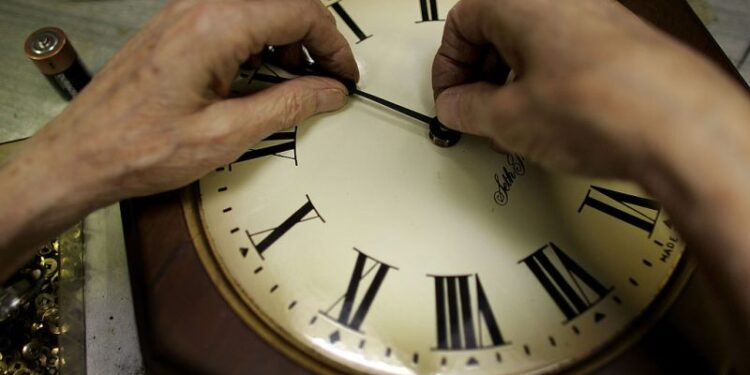
(NEXSTAR) — We’re a couple of weeks away from the start of daylight saving time, and it isn’t just federal lawmakers (and President Donald Trump) who are hoping this is the last time we “spring forward.”
There has been growing interest in ditching the practice. Polls have shown Americans prefer permanent daylight saving time, though many health experts disagree.
In December, Trump threw his support behind eliminating the “inconvenient” and “costly” practice as the leaders of the Department of Government Efficiency (DOGE) called to abolish daylight saving time.
While Trump didn’t clarify which side of the clock he’s on, lawmakers in many states have made their preference known this year.
In nearly two dozen states, legislation regarding daylight saving time has been introduced.
In some states, including Illinois and Ohio, lawmakers have brought forth resolutions that call on Congress to make daylight saving time permanent, which is already in the works. Several states have already passed such legislation, but more on that in a moment.
Lawmakers in Connecticut, Illinois, Iowa, Maine, Maryland, North Carolina, and Pennsylvania are hoping to observe daylight saving time year-round. A similar bill was introduced in Mississippi but died in committee.
States can only request to observe standard time year-round (only two states have done this), they cannot opt for year-round daylight saving time. In most cases, the aforementioned bills would put the state on daylight saving time permanently only if Congress would allow it.
U.S. Rep. Celeste Maloy (R-UT) recently introduced a bill that would allow states the power to observe daylight saving time year-round.
In several states — Arkansas, California, Idaho, Indiana, Kansas, Kentucky, Nevada, New Jersey, North Dakota, Oregon, Pennsylvania, South Dakota, Utah, Washington, and West Virginia — bills to make standard time permanent or exempt the state from observing daylight saving time have been introduced.
Competing legislation supporting year-round daylight saving time and standard time has been introduced in Alaska, Massachusetts, Missouri, Nebraska, New York, South Carolina, Texas, and Virginia.
Lawmakers in Texas have also proposed letting voters express their preference between permanent standard time and permanent daylight saving time.
Some of this proposed legislation comes with caveats. In Oregon, for example, a proposed bill would put only the portion of the state that falls within the Pacific Time Zone on permanent standard time year-round only if California and Washington make such a change within the next decade. The bill proposed in Connecticut would move the state to year-round daylight saving time only if Massachusetts, Rhode Island, and New York did.
A New York bill, if passed, would establish a task force to “to study the effects of New York state opting out of daylight saving time.” In Oklahoma, a bill has been introduced to repeal a bill signed last year that would put the state on permanent daylight saving time.
Within many of these bills, lawmakers have clarified that should the U.S. switch to year-round daylight saving time, so too would their states. The Utah bill states that if the federal government were to allow the state to observe daylight saving time year-round, it would switch to that practice.
In California — where a resolution that would “proclaim that the Legislature acknowledges the health benefits of permanent standard time” has been introduced — voters already gave lawmakers permission to change the daylight saving time period observed in the state with a two-thirds vote. Since the change can only happen in accordance with federal law, the state could only switch to permanent standard time.
Many states have enacted similar legislation. In Alabama, Colorado, Delaware, Florida, Georgia, Louisiana, Minnesota, Tennessee, and Wyoming laws have been signed to put each on permanent daylight saving time, should Congress allow it. Some, like Delaware and Wyoming, added provisions that require neighboring or nearby states to do the same before their clocks are locked.
Some states have not considered clock-locking legislation — this year or in recent history. That includes Michigan, New Hampshire, and New Mexico. In the last five years, no related proposals have been brought forth in the District of Columbia, Rhode Island, and Wisconsin.
Newly-introduced Congressional bills, meanwhile, have all been referred to committees. That means for now, daylight saving time will begin on March 9 and end on November 2.







